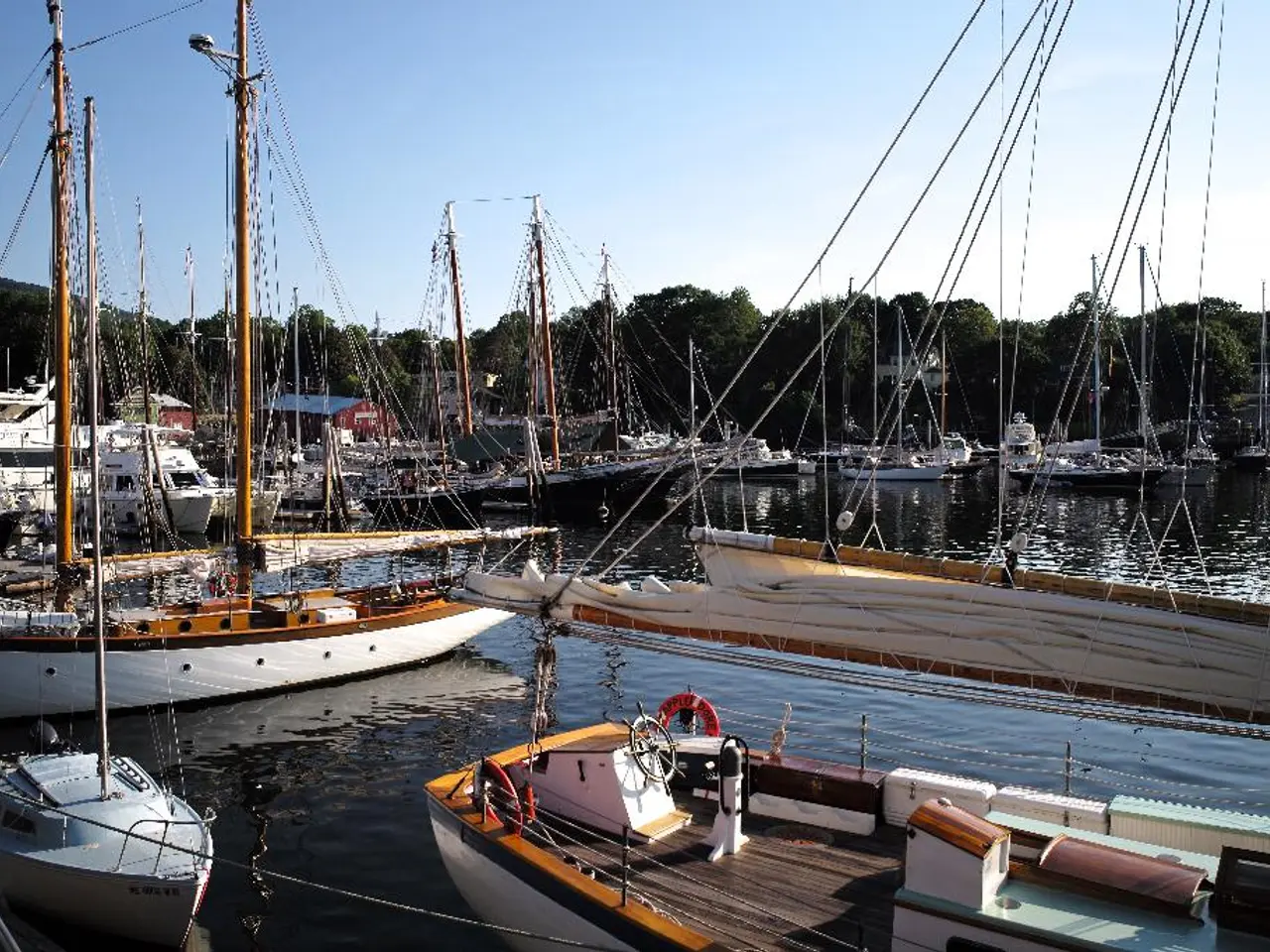Submerged fiber-optic lines form the hidden foundation of the worldwide web
Protecting Undersea Fiber-Optic Cables: Strategies for Global Internet Connectivity
Undersea fiber-optic cables form an extensive network of communication lifelines, connecting continents and enabling global internet connectivity. These cables, consisting of multiple optical fibers, transmit vast amounts of data across long distances with minimal loss, offering the fastest and most reliable method of data transfer available today.
Layout
The process of laying undersea cables begins with thorough seabed surveys to chart a map and avoid natural hazards while minimizing environmental impact. The cables are carefully routed along seabeds, connecting landing points across continents and islands, forming the backbone of global internet infrastructure.
Threats and Protection
Physical damage is the primary threat to undersea cables, primarily caused by fishing activities, anchoring by ships, natural hazards, and deliberate sabotage. Environmental factors like corrosion, wear due to currents, and marine life interactions also pose risks. Cable cuts or failures can lead to major disruptions in international communications, given that over 95% of intercontinental data traffic depends on these cables.
To safeguard these critical networks, protection strategies include careful route selection, cable armoring, burial of cables, and the use of multiple redundant cables. This ensures network resilience, as traffic can be rerouted if one cable is damaged, minimizing data loss or downtime. Governments, consortiums, and international cooperation also play crucial roles in monitoring, maintaining, and rapidly repairing cables.
The Future of Undersea Cables
Experts suggest a blended approach using both undersea cables and satellites to provide protection against cable cuts. Satellite operators have already demonstrated their ability to reroute internet traffic when undersea cables are compromised. The potential for sabotage, particularly by nation-states, is a growing concern for undersea cables.
In summary, undersea fiber-optic cables are meticulously routed and engineered networks critical for global data transmission. They face threats primarily from human activities and natural events and are safeguarded through strategic cable design, protection methods, redundancy, and international collaboration to ensure the reliability of worldwide communications.
Sources:
- The Conversation
- Quinnipiac University
- 2Africa
- Submarine Cable Map
- Submarine Cable Landing Stations
Additional Information:
- Along the route, repeaters are installed at intervals to amplify the optical signal and ensure data can travel long distances without degradation.
- More than 95% of all the data that moves around the world goes through these undersea cables.
- Robin Chataut is an Assistant Professor of Cybersecurity and Computer Science at Quinnipiac University.
- A blended approach using both undersea cables and satellites could provide protection against cable cuts.
- The potential for sabotage, particularly by nation-states, is a growing concern for undersea cables.
- About 485 undersea cables totaling over 900,000 miles sit on the ocean floor.
- Satellite operators used their networks to reroute internet traffic after undersea cables were compromised.
- Undersea cables, also known as submarine communications cables, are fiber-optic cables laid on the ocean floor and used to transmit data between continents.
orbital debris could pose a potential threat to the next generation of undersea fiber-optic cables, increasing the need for shielding or rerouting mechanisms due to the risk of cable damage from careless re-entry or debris collisions in space.
Maintaining the security of undersea fiber-optic cables is crucial for the continuity of the space economy, as telecommunications and data-and-cloud-computing services heavily rely on the uninterrupted flow of data transmitted via these cables.
With the growth of commercial space operations, the demand for satellites will likely increase, creating opportunities for collaboration between the space industry and those responsible for undersea cable maintenance. By combining resources, potential improvements in data transmission efficiency could be achieved through innovations in technology.
Then, concerning cybersecurity, there's a necessity to address possible vulnerabilities in undersea cable infrastructure to prevent cyber attacks, safeguarding critical international data from theft or manipulation, potentially impacting financial markets, economies, or national security.




